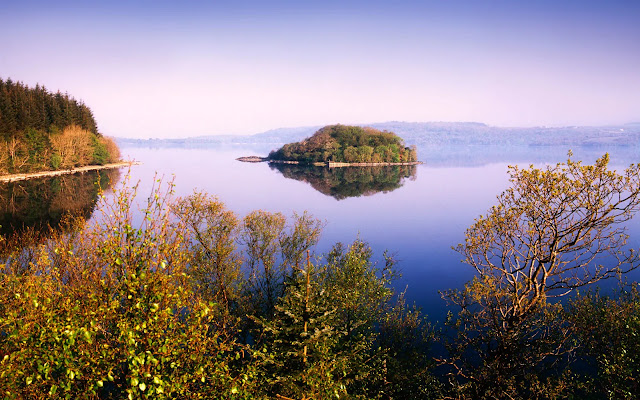William
Butler Yeats was born on 13th June 1869. His father was John Butler
Yeats, a renowned artist. When Yeats was young his family moved to London from
his native Ireland where they thought John Yeats would be able to further his
career.
At
first the Yeats children were educated at home by their mother who entertained
them with stories from Irish folklore.
Yeats’
early works were based on Irish lore. (The Celtic twilight - 1892) in his 40’s
his style of writing changed as a result of his association with the poets like
Ezra Pound and his involvement in the Irish politics. As a result his style
became more modern, his language became more dignified and themes more direct.
(In the Seven Woods, Responsibilities)
Yeats
was a driving force behind the Irish Literary Revival and Abbey Theater. He
served as a senator in the first Irish Parliament. In 1923 he was awarded the
Nobel Prize in Literature. W B Yeats passed away on 28th January
1939.
The
poem, "The Lake Isle of Innisfree," belongs to the middle period of Yeats’
poetry. By this time Yeats had been an active member of the Irish National
Movement for a number of years. The political situation I Ireland was very
tense. He had also suffered from the rejection of Maud Gonne. The sensitive
poet in Yeats suffered horribly from both. Therefore, he yearned for some peace
from the turmoil. The lake isle of Innisfree represented peace for the poet.
The memory of the isle beckoned to him offering reprieve from the hectic life
he led.
I
will arise and go now, and go to Innisfree
And
a small cabin build there, of clay and wattles made
In
the first stanza he says he would arise and go to Innisfree. There he is going
to build a cabin and farm, a dream many people living in cities have. The poet
wants to live close to nature devoid of the restrictive trappings of the
society that weighs on his artistic spirit.
In
the second stanza he discusses lack of peace and quietness in his life. So he
is dreaming of going to Innisfree to find freedom. There he would live
listening to the songs of crickets and admiring the changing colour of the sky.
And
I shall have some peace there, for peace comes dropping slow,
Dropping
from the veils of the morning to where the cricket sings,
There
midnight’s all a glimmer, and noon a purple glow,
And
evening full of the linnet’s wing
In
the third stanza he once again says that he would go to Innisfree, a memory he
carries in his heart. The memory is so powerful he is able to summon it even
while he is standing on the roadway or on a grey pavement.
I
will arise and go now, foe always night and day
I
hear lake water lapping with low sounds by the shore:
While
I stand on the roadway, or on the pavement grey,
I
hear it in the deep heart’s core.
Techniques:
The
poem has three stanzas, four lines each. The lines rhyme: abab. Language is
simple. The topic “The Lake Isle of Inisfree” stands for the age-old human
dream of wanting to runaway to a deserted island when someone is going through
a rough time.
In
the second stanza the poet uses a beautiful metaphor – “veil of the morning”.
Yeats also uses inversion to make the poem more dramatic - “ And a small cabin build there, of clay and
wattles made;” When describing the isle the poet has used happy bright images.
In contrast the city is described using gloomy adjectives: "And
live alone in the bee-loud glade” and “While
I stand on the roadway, or on the pavement grey”. The theme is the
ability the nature has to bring happiness and contentment to people.


.jpg)


No comments:
Post a Comment